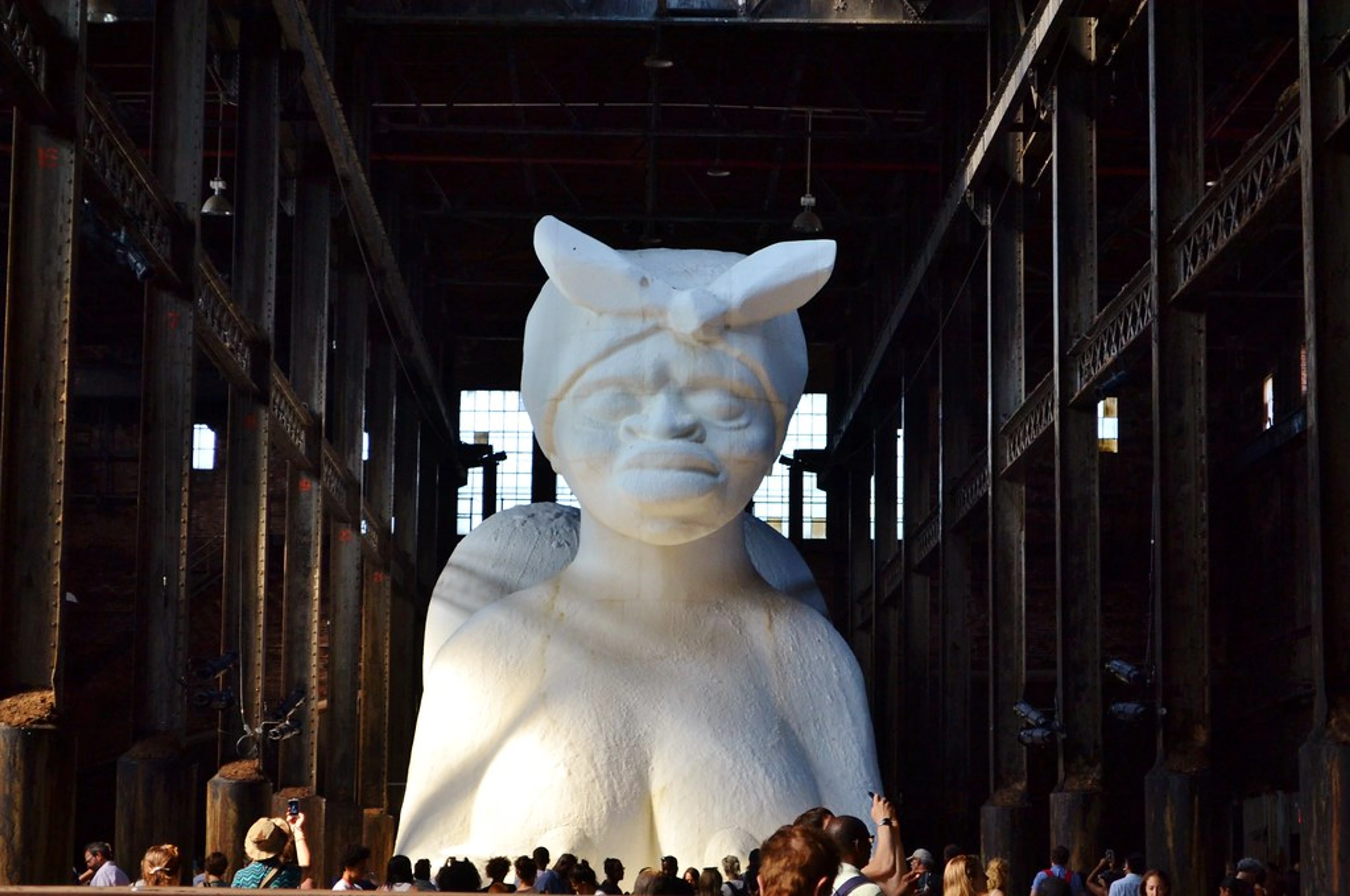
Installation Art: My Journey Into Immersive Worlds & Their History
Dive into installation art's evolution from a personal, curatorial perspective. Explore immersive experiences, key artists like Kusama & Kara Walker, its historical journey, and profound impact on perception.
Installation Art: My Journey Into Immersive Worlds & Their History
Sometimes, even with my own abstract creations, I look at a painting and think: "This is great, but what if art wasn't confined to a wall?" This persistent whisper, a sort of artistic wanderlust, has always steered my curiosity. It's a desire to push boundaries, explore new dimensions, and truly ponder what art can be. For me, nowhere is that wanderlust more utterly satisfied than in the boundless realm of installation art – a medium that fundamentally redefines the relationship between artwork, space, and viewer. It's less about looking at something and more about stepping into an experience, often leaving me breathless and rethinking everything I thought I knew about art. It represents a profound evolution in how we conceive of artistic expression, moving from discrete objects to comprehensive, sometimes unsettling, environments. This journey isn't just about what art is, but what it does to you, to the space, and to our understanding of reality.
A Whisper from the Past: The Unfolding Story of Installation Art
The idea of art stepping off the canvas wasn't some sudden epiphany. It was a slow, sometimes awkward, but utterly fascinating evolution, deeply intertwined with broader cultural and philosophical shifts. If you ask me, the seeds were sown way back with early 20th-century avant-garde movements. Artists began questioning the very definition of art, authorship, and the sanctity of the art object itself, often fueled by post-war disillusionment and a societal desire to break from tradition. This wasn't just about making new art; it was about reimagining art's purpose entirely.
Early Seeds of Discontent
Figures like Marcel Duchamp famously introduced 'readymades' – everyday objects, like a urinal or a bicycle wheel on a stool, presented as art. These weren't installations in the modern sense, but they profoundly challenged the notion of what an art object could be, and where it could be found. For a deeper dive into these rebellious beginnings, you might enjoy exploring the broader history of abstract art.Even earlier, but equally provocative, was the German artist Kurt Schwitters, who began his monumental "Merzbau" in 1923. This was an ever-expanding, multi-room, multi-story sculptural environment built from found objects, wood, and plaster within his own home. It was a chaotic, deeply personal universe that prefigured many aspects of later installation art, an entire world built from scraps, defying categorization and inviting contemplation. Another visionary, El Lissitzky, with his "Proun Room" in the 1920s, created abstract, architectural environments that sought to immerse the viewer in a utopian artistic vision, blurring the lines between painting, sculpture, and architecture. These were whispers of the immersive future, daring to imagine art beyond the frame.
Breaking Free: Mid-20th Century Revolutions
Fast-forward to the 1950s and '60s, and artists got even bolder. This era witnessed a profound philosophical shift: a rebellion against the commercialism of the art world, the perceived sterility of the 'white cube' gallery (a term referring to the neutral, often institutional exhibition space), and a growing interest in process over product. The 'white cube,' with its pristine, detached environment, became a symbol of art's commodification and isolation, leading artists to seek spaces and forms of expression that actively resisted such confines.This period saw the rise of several pivotal movements, each contributing to the foundation of contemporary installation art:1. Happenings and Fluxus: Pioneered by artists like Allan Kaprow and figures such as Yoko Ono, these weren't static objects but rather events, performances, and environments designed to break down the barriers between art and life. They emphasized spontaneity, audience participation, and often ephemeral experiences. It's like art decided to have a flash mob, and everyone was invited to join the chaos. For a moment, the art wasn't just there to be seen; it was the experience, unfolding around and through you.2. Conceptual Art: This movement prioritized the idea or concept behind the artwork over its material form. It freed artists to use any means necessary to convey an idea, making the physical manifestation often secondary or even irrelevant. This intellectual emphasis on the artwork's core meaning paved the way for installations where the physical elements serve a larger, overarching concept.3. Minimalism: While seemingly about simple forms, Minimalism deeply engaged with the viewer's experience of space. Artists like Donald Judd created 'specific objects' that demanded attention to their physical presence and their interaction with the architectural environment. This movement subtly paved the way for immersive considerations by forcing viewers to confront the artwork's scale and its relationship to their own bodies and the surrounding architecture.4. Arte Povera: Emerging in Italy, this movement (meaning 'poor art') used everyday, 'poor' materials – industrial scraps, earth, rags, food – to create works that were often site-specific and critically engaged with society. Artists like Michelangelo Pistoletto and Jannis Kounellis crafted environments that drew power from their raw honesty, often in direct dialogue with their exhibition spaces, highlighting the material culture of post-war Europe.5. Land Art & Environmental Art: Artists like Robert Smithson created monumental earthworks like his iconic "Spiral Jetty," completely transforming natural landscapes. This expanded the gallery space to the entire planet, challenging traditional notions of display and permanence. The impulse to incorporate artists who use found objects in their work also grew during this period, adding another layer of accessibility and commentary, bringing the grit and reality of the world directly into the artistic dialogue.It was around this time that artists truly embraced the idea of creating immersive spaces. They weren't just showing objects; they were building worlds. And for someone like me, who finds so much joy in building depth in abstract acrylics, this expansion of 'depth' into three, even four, dimensions is utterly captivating. It's a testament to the boundless creativity that emerges when artists decide the frame is just a suggestion, and the whole world becomes their canvas.
What Exactly Is This Immersive Art?
Before we get too lost in the rabbit hole (and trust me, with installation art, rabbit holes are often part of the experience), let’s try to pin down what we’re talking about. Forget the traditional canvas or a freestanding sculpture for a moment. Installation art is, at its heart, about creating an environment or an experience within a given space. This isn't just a collection of objects placed together; it's a deliberate arrangement where the sum is profoundly greater than its parts.
Site-Specificity: When the Space Becomes the Art
Installation art is often site-specific, meaning it's intrinsically designed for a particular location, and can be temporary or permanent. This means the artwork and its setting are inseparable; one informs the other. It's not just in a space, it is the space. Consider an ephemeral artwork made of ice, melting slowly in a bustling city square – its message about climate change is amplified by its urban context and its fleeting nature. Or a light installation transforming the ancient stones of a cathedral, bridging centuries with beams of pure light, evoking dialogue between history and contemporary expression. A powerful example might be an installation designed for a former industrial factory, where the grime, scale, and echoes of past labor become integral to the artwork's commentary on economics or history. This profound interaction with the environment is crucial to the artwork's meaning; it's not just in a space, it is the space.
Materials and Viewer Interaction
The materials used are as boundless as the imagination – anything from everyday objects and found items to light, sound, video, and even living things. Consider the monumental interventions of Christo and Jeanne-Claude, who famously wrapped entire islands and public buildings, transforming familiar landscapes into temporary, awe-inspiring spectacles. Or the sensory wonders of Olafur Eliasson, who crafts indoor suns and artificial rainbows, playing with perception and natural phenomena. Then there's Ai Weiwei, who once filled a vast hall with millions of handmade porcelain sunflower seeds, challenging our understanding of scale, labor, and social commentary, and inviting us to walk amongst them.The key is that the entire arrangement of these diverse elements, and how they interact with the space and you, the viewer, becomes the artwork itself. It's a bit like art throwing a party where you’re not just an observer, but an active guest, perhaps even an unwitting co-conspirator in the overall vibe. The art doesn't just invite you to look; it insists on your participation, whether through your physical movement through the space, your sensory engagement, or even your internal emotional response that completes the piece. This spectrum of interaction can range from passive immersion to active manipulation of elements, or even collaborative creation, blurring the lines between viewer and participant. If you're curious about other ways artists break free from the canvas, you might enjoy my thoughts on exploring abstract art in sculpture and mixed media.
The Age of Experience: Art That Embraces and Transforms You
Today, when most people think of installation art, they're likely picturing something profoundly immersive – a room you step into that overwhelms your senses, or a vast, intricate construction that makes you forget your surroundings. This focus on experience has become central to the medium, reflecting a desire to move beyond mere visual apprehension. It's not just about seeing; it's about feeling, hearing, perhaps even smelling. It's about how your body moves through the space and how the art transforms you in that moment, creating a dialogue between the viewer and the artistic environment.There’s something incredibly vulnerable, yet powerfully liberating, about stepping into an artwork. It strips away the usual critical distance we keep from art. You're no longer just an observer; you're a participant, whether you want to be or not. The artwork literally surrounds you, demanding your full attention. It’s not unlike how I hope people feel when they stand before one of my highly textured abstract pieces – a sense of being drawn in, of finding new details and emotions the longer they look. Installation art just takes that to an extreme, a full-body embrace rather than a subtle whisper, demanding a surrender of the senses.I remember once walking into an exhibition, and instead of just looking at paintings, I found myself enveloped in a symphony of whispered words coming from different corners, the floor gently vibrating, and light shifting in unsettling ways. It wasn't my usual comfortable gallery stroll. It was a full-body dialogue, frankly, a bit unsettling, but in the best possible way. It made me think about the meaning of art in a completely new light – a meaning that resides not just in the object, but in the interaction and the subjective response it elicits. This potent ability to completely transport you, to challenge your perceptions, is what makes it so compelling. It's a reminder that art isn't just decoration or a pretty picture; it's a force that can alter reality, even if just for a moment. And isn't that what we all secretly crave? A little escape, a little magic, a moment where the ordinary becomes extraordinary?
Artist Spotlight: Yayoi Kusama – Master of the Infinite and the Psyche
When we talk about immersive installation art, one name immediately leaps to mind, utterly synonymous with mind-bending sensory experiences: Yayoi Kusama. Her work is a dazzling, sometimes dizzying, explosion of patterns, light, and reflection that completely envelops the viewer, often evoking feelings of awe, wonder, and even a profound sense of the sublime or the unsettling vastness of existence. Her legendary "Infinity Mirror Rooms" are perhaps her most famous contribution – you step in, and suddenly you're in a universe of endless reflections, often filled with polka dots or glowing lanterns. It's a sublime, almost spiritual experience that completely disorients and captivates, often leaving one with a strangely poignant sense of self-obliteration within the infinite. For a deeper dive into her world, check out this ultimate guide to Yayoi Kusama.What I find particularly fascinating about Kusama's approach is how her immersive environments, despite their physical permanence, create a profound sense of ephemerality in the viewer's experience. The sensory overload, the endless reflections, the disorienting patterns – they all contribute to a feeling of being momentarily lost in the art, where the boundaries of self and space dissolve. It's a powerful reminder that the 'temporary' aspect of installation art isn't always about the physical object, but about the fleeting, intense nature of the subjective experience it provides.Take, for instance, her "Dots Obsession" series. It's not just a few dots; it's everywhere. The walls, the floor, the sculptures, even the air feels dotted. It’s overwhelming, obsessive, and utterly brilliant – a testament to how a simple motif, when taken to its extreme, can create an entire world and, perhaps, a window into the artist's own psyche. It makes me think about my own creative compulsions, though perhaps with fewer polka dots.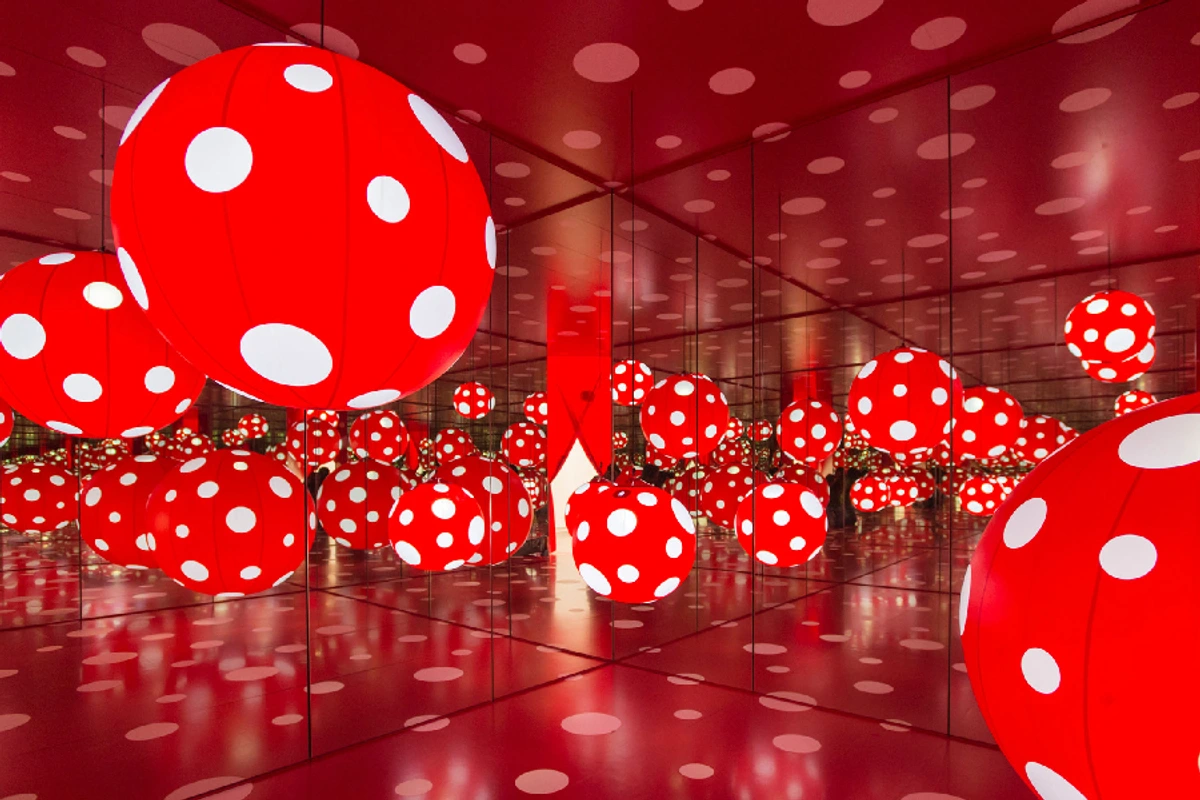
credit, licenceAnd then there are her pumpkins! Often seen in her mirrored rooms, these polka-dotted forms create an endless field, transforming a simple squash into a symbol of infinity and self-obliteration. It's playful, profound, and utterly unique, reflecting both her personal struggles and her universal themes.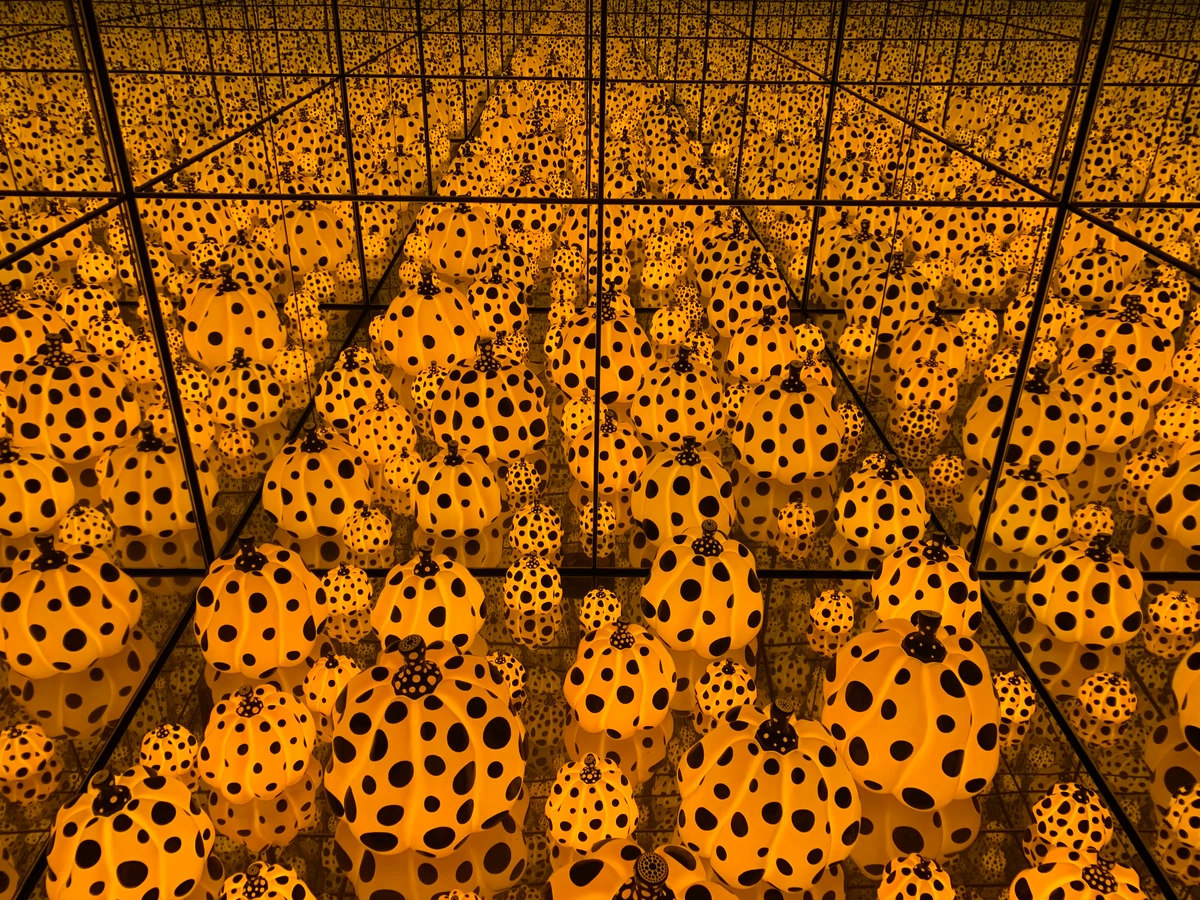
credit, licenceHer environments, such as "With All My Love for the Tulips, I Pray Forever," exemplify her commitment to immersing viewers in her unique vision. Here, a familiar space is transformed into a whimsical, yet deeply felt, landscape of dots and oversized floral forms, blurring the lines between reality and her fantastical internal world.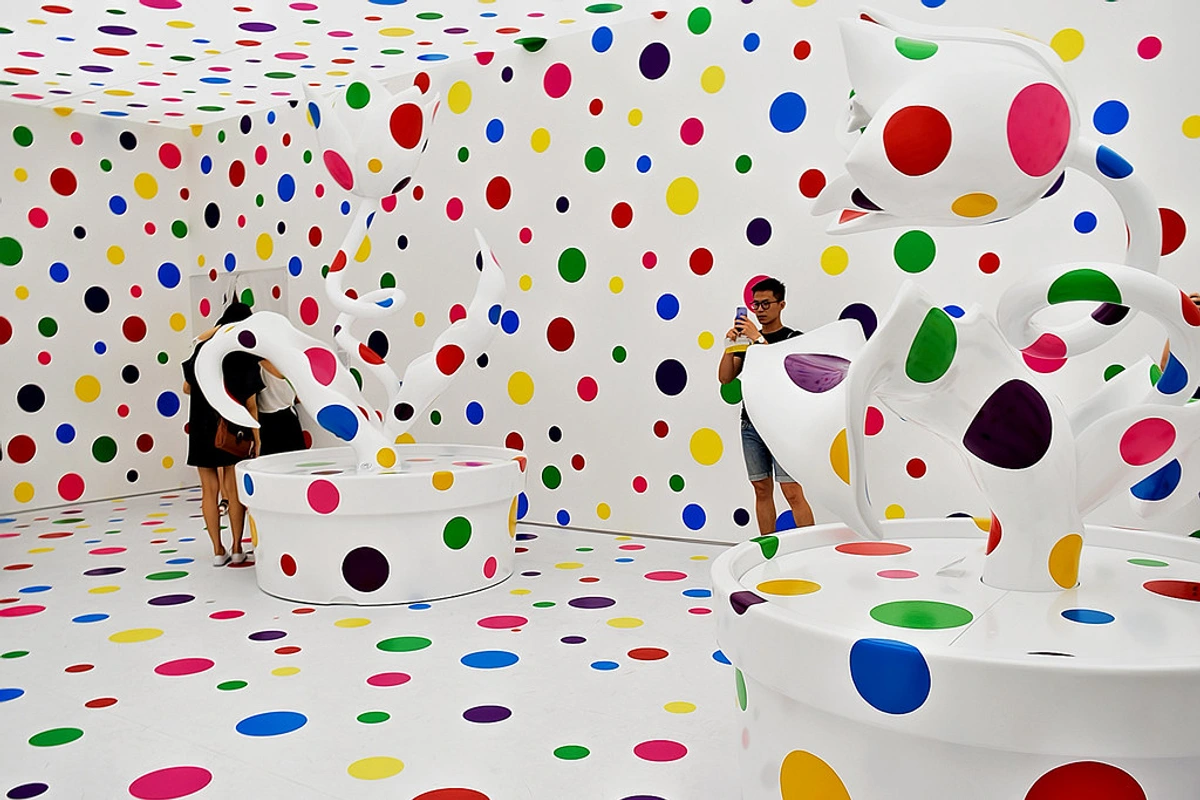
credit, licenceKusama’s work truly exemplifies how installation art can create a powerful emotional and psychological impact, drawing viewers into a world that is both intensely personal to the artist and universally resonant. It makes you realize that sometimes, you just need a lot of polka dots to make your point, and perhaps, to find a sense of calm within chaos. It is a testament to the power of sustained artistic vision and the profound effect art can have when it completely encompasses its audience.
Case Study: Kara Walker's "A Subtlety"
When Art Becomes a MomentBeyond the dazzling spectacle, installation art also serves as a potent vehicle for social and political commentary, often transforming familiar spaces into sites of profound dialogue. One such unforgettable example is Kara Walker's monumental installation, "A Subtlety, or the Marvelous Sugar Baby," from 2014.Set within the cavernous, decaying Domino Sugar Factory in Brooklyn, New York, Walker created an enormous, sugar-coated sphinx-like sculpture, flanked by smaller, molasses-colored child figures. This work was a direct, searing commentary on the history of sugar production, the exploitation of enslaved labor, and the racial stereotypes embedded within American culture. The site itself – a former sugar refinery – was absolutely integral to the artwork's meaning. The smell of molasses, the industrial decay, and the scale of the factory amplified the sculpture's impact, forcing viewers to confront uncomfortable histories within a physically overwhelming and sensory environment. It was temporary, existing only for a few months, yet its cultural resonance endures. This piece exemplified how installation art can harness site-specificity and ephemeral materials to create a powerful, socially engaged statement that deeply affects its audience, long after the physical structure is gone.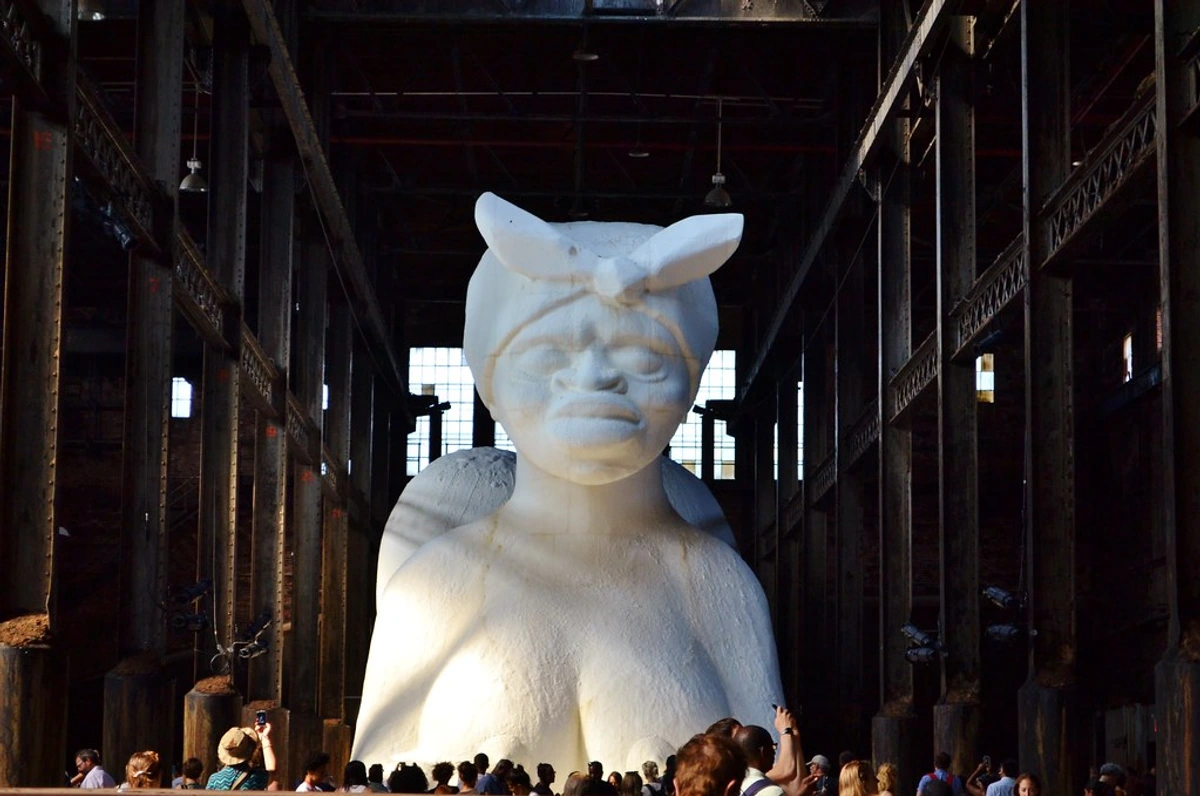
Beyond the Walls: The World as a Gallery, and the Realities of Creation
What I also find profoundly fascinating is how installation art often challenges the very notion of a traditional gallery space, asserting that art need not be confined. Many installations are site-specific, meaning they are not merely placed in a location, but are intrinsically created for, and respond to, a particular environment – be it an abandoned factory, a bustling city square, a remote desert, or even the digital realm. This profound interaction with the environment is crucial to the artwork's meaning; it's not just in a space, it is the space. This often leads to profound dialogues between the art and its context, highlighting social issues, celebrating history, or simply transforming the mundane into the magical.
The Ephemeral and the Enduring: Challenges of Creation and Preservation
But creating these grand, often temporary, visions is no small feat. The logistics alone can be staggering – securing sites, managing complex permits, sourcing and transporting often unconventional materials, and then the sheer physical labor of assembling and dismantling. It requires not just artistic vision, but an almost architectural, engineering, and logistical prowess – a symphony of planning and execution that most viewers never even consider. It makes my challenges of finding the perfect frame or choosing the right canvas seem trivial by comparison!The often ephemeral nature of installation art also presents unique challenges for preservation and legacy. While some installations are permanent, many are designed to exist for a limited time, making their impact more immediate and precious. This impermanence forces a re-evaluation of art's value, shifting it from a material object to an experience, a memory, or a powerful documented event. The documentation – photographs, videos, and detailed schematics – becomes a critical part of the artwork's enduring presence. This breaking free from traditional confines is a reminder that art can thrive anywhere. For an artist, it's liberating to think about art beyond the studio, much like my own journey into mixed media, blending materials for abstract expression – always pushing beyond what's expected and embracing new forms of expression.
Critical Reception and the Art Market's Embrace
Installation art, with its often unconventional forms and temporary nature, hasn't always been met with universal acclaim. Early reactions from some critics and the public ranged from confusion to outright dismissal, as it challenged ingrained notions of what art should be. Its departure from traditional, easily commodifiable objects also presented a unique conundrum for the art market. How do you sell or collect something that might only exist for a few weeks, or is tied intrinsically to a specific location?Despite these initial hurdles, the medium has steadily gained critical recognition and institutional support. Major museums now regularly commission and exhibit large-scale installations, recognizing their power to draw audiences and push artistic boundaries. The market has adapted, too, with collectors often acquiring the rights to re-create an installation, along with meticulous documentation and blueprints. This evolution in reception reflects a broader cultural shift towards valuing experience and concept alongside the material object.
My Own Humble Musings on an Endless Canvas
So, while my own work primarily resides on canvases and in print, the spirit of installation art deeply resonates with my artistic philosophy. I believe art should be an experience, a conversation, a feeling that lingers long after you've moved on. My abstracts, with their intricate layers and often vibrant colors, aim to draw you in, inviting you to explore depths and discover narratives that aren't immediately apparent. It's a more intimate, personal immersion, perhaps, but the goal of engaging you beyond mere observation is very much the same – to create a moment where you are entirely present with the art, allowing it to speak to your inner world.If you ever find yourself near 's-Hertogenbosch, you can experience some of my work up close at the Den Bosch Museum – a different kind of 'installation,' perhaps, but one where I hope my art still creates its own unique atmosphere. And if you're looking to bring a piece of that immersive feeling into your own home, you can always explore my art for sale.
The Future is Now (and Always Was): Installation Art in a Digital Age
As technology advances, so too does the potential for installation art. We're seeing more and more digital installations, projections, virtual reality experiences, and interactive pieces that blur the lines between physical and virtual. Artists like Rafael Lozano-Hemmer create captivating interactive light and sound installations that respond to biometric data or viewer presence, transforming public spaces into dynamic, participatory artworks. The collective teamLab, from Japan, crafts breathtaking digital environments that dissolve the boundaries between the artwork and the viewer, inviting exploration and co-creation in ever-changing virtual landscapes.It’s an exciting, sometimes overwhelming, frontier where the possibilities feel truly endless, perhaps even blurring the lines between art and our very consciousness. It makes me wonder if, in another fifty years, we'll be stepping into holographic installations in our living rooms, or if art will become so integrated with our environment, our everyday augmented reality, that we won't even distinguish it anymore. Perhaps that’s the ultimate evolution: art that simply is, all around us, always, a constant, gentle hum in the background of our lives, shaping our perceptions without us even noticing. A truly wild thought, isn't it?
Frequently Asked Questions About Installation Art
What is the main difference between installation art and sculpture?
This is a great question that often trips people up! While both involve three-dimensional forms, the key difference lies in their relationship with space and the viewer. Here's a quick comparison:
Feature | Sculpture | Installation Art |
|---|---|---|
| Viewer's Role | Observer, circulates around the object | Participant, steps into the experience |
| Relationship to Space | Object exists within a space, self-contained | Space is transformed into the artwork itself |
| Focus | Individual object/form, material properties | Environment, atmosphere, viewer interaction, concept |
How does installation art relate to performance art?
This is another area where boundaries blur! Many early forms of installation art, particularly the "Happenings" and Fluxus events of the 1960s, had strong performative elements. While performance art typically centers on the artist's or performers' actions over time, many installations incorporate live elements, sound, or video that evoke a sense of performance or require viewer interaction akin to a participatory event. The key distinction often lies in the emphasis: performance art foregrounds action and duration, while installation art foregrounds the creation of an immersive environment, even if that environment facilitates a performance.
Is installation art usually temporary?
Many famous installations are indeed temporary, created for specific exhibitions, festivals, or sites, and then dismantled. This ephemeral quality can be part of their power, making the experience more unique, urgent, and precious. The temporary nature can also be integral to the artwork's message, as seen in pieces that comment on transience, decay, or environmental cycles. However, some installations are permanent, especially those commissioned for public spaces or integrated into architectural designs. For example, some land art or public art installations are designed for longevity, while others are site-specific but designed to be dismantled, leaving behind only documentation.
How do you 'collect' installation art?
That's another fascinating challenge for collectors and institutions alike! Unlike a painting or a small sculpture, a large-scale, site-specific installation isn't something you can easily hang on a wall or place on a shelf. Collecting often involves acquiring the rights to re-create the installation, along with detailed instructions, diagrams, and specific materials specified by the artist. Crucially, it also involves the documentation – extensive photographs, videos, plans, and artist statements that capture the ephemeral essence of the piece for posterity. The role of artist estates and foundations is vital here, as they manage the legacy and licensing of these complex works, ensuring that the artist's original intent is respected during any re-creation. It's less about owning a physical object and more about owning the concept, the blueprint for its realization, and its meticulously documented history. If you're interested in collecting art beyond traditional canvases, you might find my guide to collecting abstract art in mixed media and sculpture insightful.
The Endless Canvas of the Mind
Ultimately, installation art is a powerful reminder that art is not static; it's a living, breathing entity, constantly evolving and redefining its own boundaries and our relationship to it. It challenges us to look beyond the frame, to step out of our comfort zones, and to truly experience what art has to offer in its most expansive forms. For me, as an artist, it's an endless source of inspiration, a constant whisper saying, "What else can you do? What other worlds can you create, even if only in the mind, or on a simple canvas?" It's a journey, not a static destination, and I'm always eager to see where it takes us next, and perhaps, where it takes you. I guess this is my own, ever-evolving installation, one thought at a time. It’s messy, sometimes grand, and always a work in progress. Just like life, right? Maybe that's the ultimate art. Oh, the thoughts that pop into my head… you're welcome. Or I'm sorry. Depending on your current mood. Either way, thanks for being here. ---




